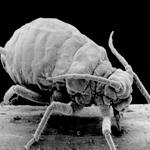 | Symbiont Name: Aeromonas veronii, Rikenella-like bacteria
Host Name: Hirudo verbana
Type: Digestive tract symbiosis
Location: Extracellular
Role: Unknown
|
 | Symbiont Name: Buchnera species
Host Name: Aphidiodea
Type: Nutritional symbiosis
Location: Extracellular
Role: Amino acid synthesis
|
 | Symbiont Name: Vibrio fischeri
Host Name: Euprymna scalopes
Type: Light organ symbiosis
Location: Extracellular
Role: Light production
|
 | Symbiont Name: Xenorhabdus nematophilus
Host Name: Steinemema carpocapsae
Type: Digestive tract symbiosis
Location: Extracellular
Role: Digestion of insect host
|